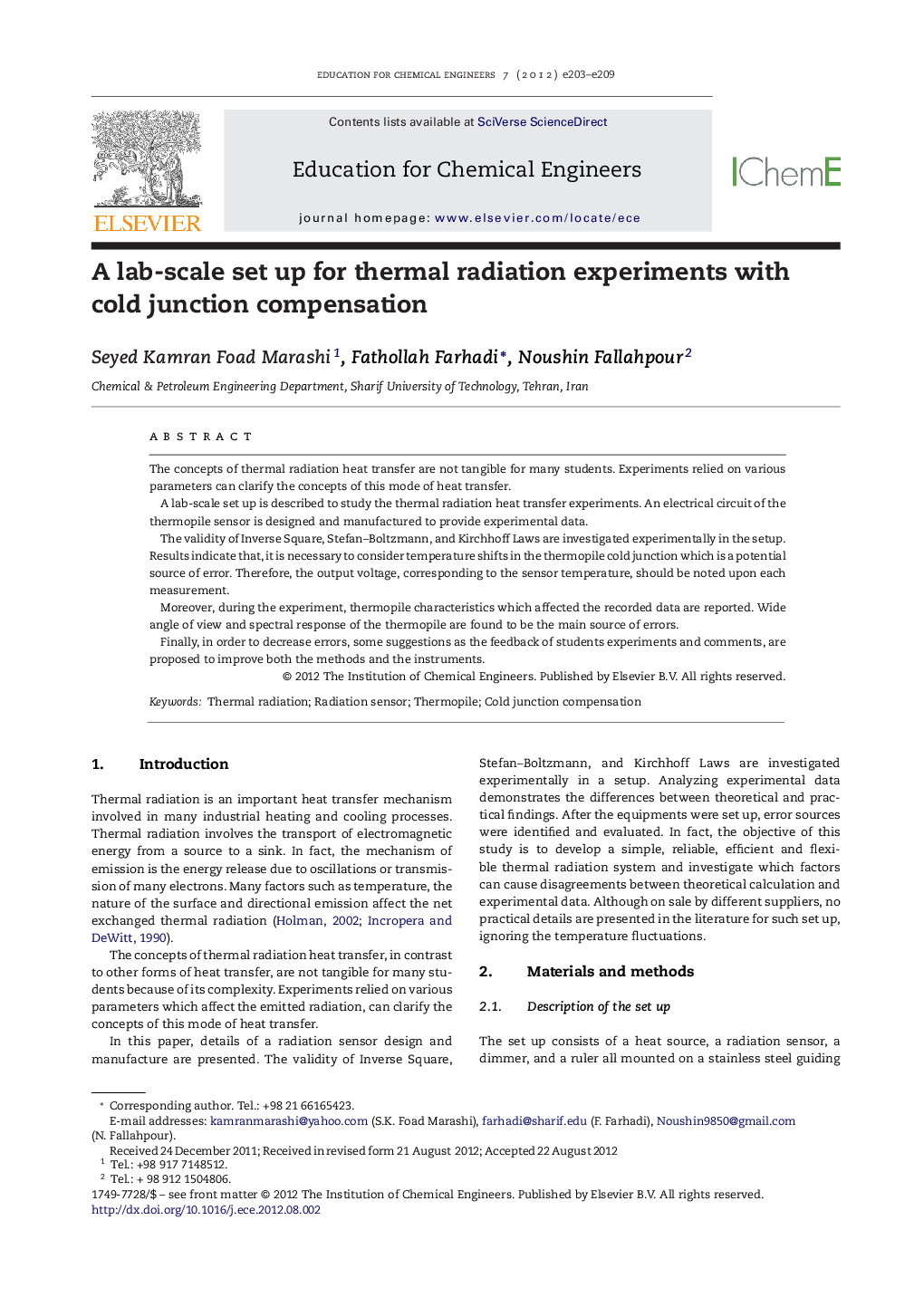| Article ID | Journal | Published Year | Pages | File Type |
|---|---|---|---|---|
| 178517 | Education for Chemical Engineers | 2012 | 7 Pages |
The concepts of thermal radiation heat transfer are not tangible for many students. Experiments relied on various parameters can clarify the concepts of this mode of heat transfer.A lab-scale set up is described to study the thermal radiation heat transfer experiments. An electrical circuit of the thermopile sensor is designed and manufactured to provide experimental data.The validity of Inverse Square, Stefan–Boltzmann, and Kirchhoff Laws are investigated experimentally in the setup. Results indicate that, it is necessary to consider temperature shifts in the thermopile cold junction which is a potential source of error. Therefore, the output voltage, corresponding to the sensor temperature, should be noted upon each measurement.Moreover, during the experiment, thermopile characteristics which affected the recorded data are reported. Wide angle of view and spectral response of the thermopile are found to be the main source of errors.Finally, in order to decrease errors, some suggestions as the feedback of students experiments and comments, are proposed to improve both the methods and the instruments.
► A lab-scale set up is described to study the thermal radiation heat transfer experiments and details of a radiation sensor design and manufacture are presented. ► Results indicate that, it is necessary to consider temperature shifts in the thermopile cold junction which is a potential source of error. ► Moreover, during the experiment, thermopile characteristics which affected the recorded data are reported. Wide angle of view and spectral response of the thermopile are found to be the main source of errors.
